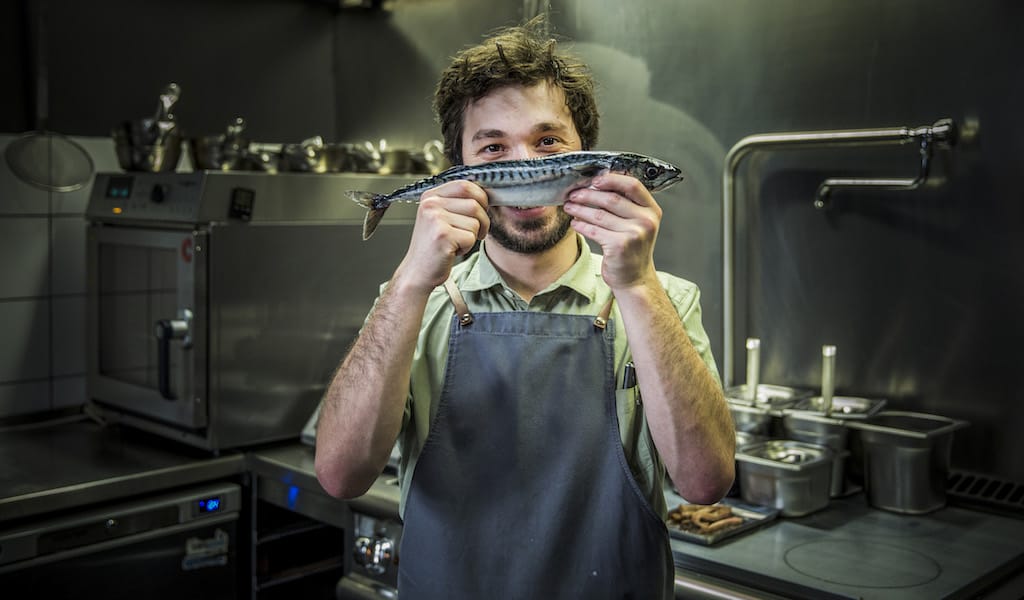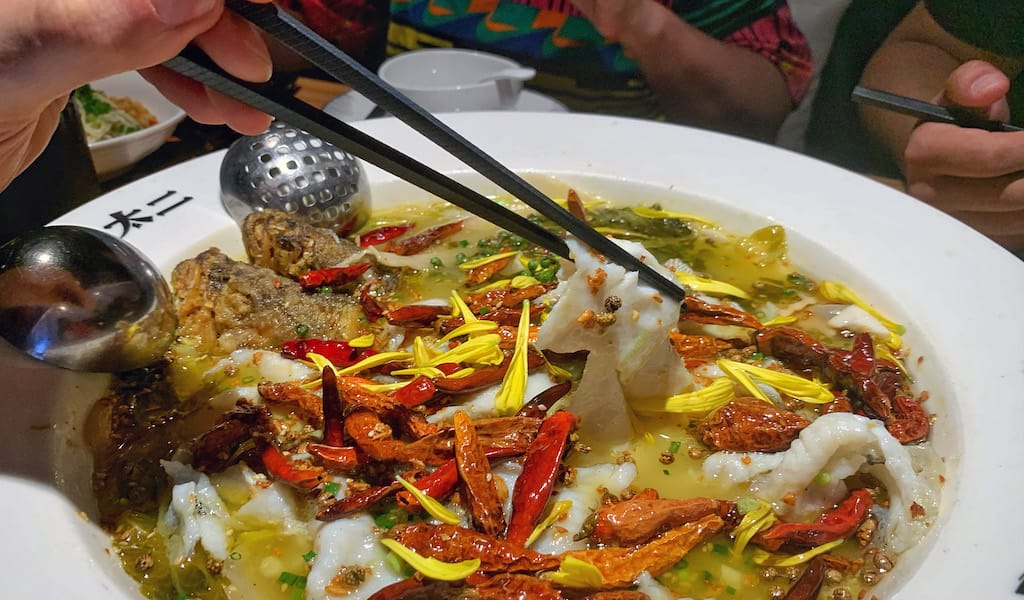There used to be a state-owned publishing house in our neighborhood with a cafeteria that served a proletariat menu that included ostri (beef stew), cold slices of beef tongue and cutlets with buckwheat or mashed potatoes. It was a stolovaya, which is the Russian word for “canteen,” but a more accurate translation would be “human fueling station of protein, carbs and vodka.” It was gutted several years ago; its ghosts now haunt the dining room of a designer hotel.
While you can find the simple stolovaya menu all over Georgia, particularly at roadhouses along the highway to the Black Sea, the workingman’s cafeteria is an institution disappearing from the Tbilisi landscape. Not that anybody’s complaining. Few people shed tears at the dematerialization of anything that represents the county’s Soviet past and stolovayas don’t rate highly in a country that takes its dining seriously. However, there is one bastion in Tbilisi’s Didube district worth noting, and not just for its retro value.
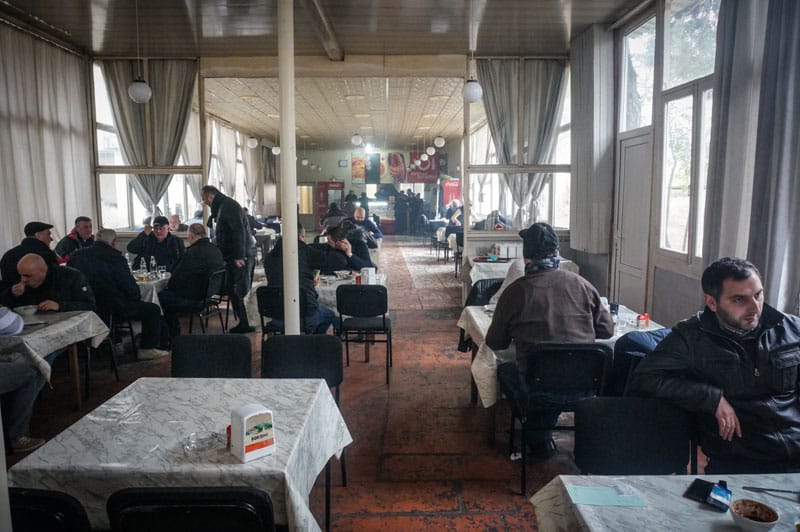
Located in the Coca-Cola bottling plant is Sasadilo Coca-Cola, a raw, no-frills, family-owned stolovaya that the late Gia Aptsiauri opened in 1995, just two years after Coke began operations in Tbilisi. It’s a busy place in a bustling neighborhood of workshops, auto repair garages and the city’s lumber and iron yards. The factory employees and local working-class stiffs make up most of the customers who jockey towards the counter – Georgians do not possess the queuing chromosome – to place their lunch orders, which are relayed back to the open kitchen in shouts, much like the iconic Greek guys at Chicago’s Billy Goat Tavern. But people do not come here for the novelty of cacophony. They come because the food is honestly good.
Gia Aptsiauri’s brothers, Vekuia and Badri, are hands-on owners, taking orders and manning the cash register. The menu board above them sets the price of most dishes at six lari – roughly US$2. Vekuia points at his brother’s shrine on a shelf and says Gia was an experienced cook whose recipes come from their native Khevsureti, a region high in the Caucasus Mountains. He insists we try their garlic-basted boiled pig’s feet and recommends their khashi – tripe soup and pig knuckles in a milky stock – but we have no hangovers to nurse and settle on a less ambitious order of kabob and kharcho.
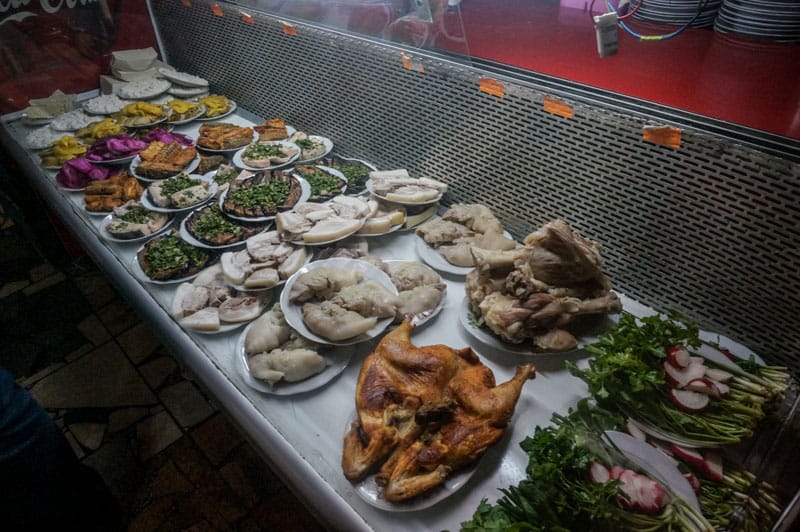
Georgia is renowned for grand feasts, monumental toastmaking and the consumption of gallons of wine in one long sitting, but the stolovaya is the other side of the gastronomic coin. For one thing, nobody drinks wine here. Two guys at the table next to us are sharing a small bottle of cognac, which in Georgia is a perfectly acceptable lunch beverage. One guy fills their glasses and the other mutters a short obligatory toast and they clink. Meanwhile, at the end of the room, five guys are plucking steaming khinkali off a platter and smoking cigarettes at the same time. It has been the same routine, hairstyles, clothes and food for over 20 years.
In a few quick minutes a waitress delivers two steaming bowls of kharcho – the prefect antidote to a cold, gray winter day. This is not the nut-based Megrelian recipe, but a spicy, rich broth of herbs, rice and fist-sized chunks of beef on the bone. It’s hard to get bad kharcho in Georgia; the trick is finding great kharcho. We dip our spoons, and from the first sip it’s clear this is no ordinary soup. It’s a drug, and we don’t come up for air until the kabobs arrive, and that’s only because we want to see if they’re as intoxicating. They’re wrapped in Armenian lavash, a thin oval flatbread. The meat is a mixture of ground pork, beef, spices and herbs. In theory they’re quite simple to prepare, they’re also really easy to mess up. They can be salty or bland, overcooked and rubbery, or undercooked and raw.
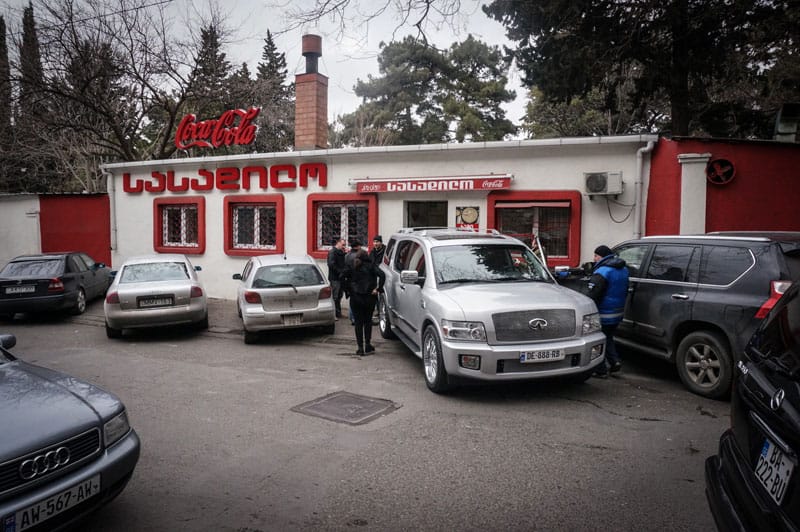
The Aptsiauri brothers serve a serious kabob – juicy, jumbo and finger-licking dangerous – but it is their kharcho that is so good, it should be illegal.
 April 24, 2018 Spring Surprises
April 24, 2018 Spring Surprises
It’s no easy task handling a 70-kilo longfin tuna or a 20-kilo corvina. But over the […] Posted in Lisbon May 4, 2018 Singing Their Praises
May 4, 2018 Singing Their Praises
As forty three countries get ready to compete in the 63rd edition of the Eurovision Song […] Posted in Lisbon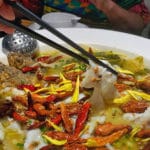 September 2, 2020 Tai Er Suan Cai Yu
September 2, 2020 Tai Er Suan Cai Yu
At Tai Er Suan Cai Yu (Tai Er Chinese Sauerkraut Fish), there are four rules: 1. You can […] Posted in Shanghai
Published on March 22, 2016
Related stories
Taste the freshest seafood in Lisbon on our ‘Song of the Sea’ walk!
April 24, 2018
LisbonIt’s no easy task handling a 70-kilo longfin tuna or a 20-kilo corvina. But over the past few weeks, we’ve watched our favorite fishmongers in Lisbon’s Mercado da Ribeira do just that – looking more like weightlifters or wrestlers, they endeavor to fillet the big, fat Atlantic fish that usually make their appearance in April. Even…
Taste some of the best food that Lisbon has to offer on one of our culinary walks!
May 4, 2018
LisbonAs forty three countries get ready to compete in the 63rd edition of the Eurovision Song Contest, the crowds have descended upon Lisbon. The city has the privilege of hosting this year’s contest because in 2017 the young Portuguese singer Salvador Sobral was crowned the winner of Eurovision with his melancholic love song “Amar Pelos…
September 2, 2020
ShanghaiAt Tai Er Suan Cai Yu (Tai Er Chinese Sauerkraut Fish), there are four rules: 1. You can only have four people max at one table at a time, and no latecomers will be seated. 2. No baby chairs allowed. 3. They will not adjust the spiciness level. 4. No takeout (although this restriction has…














































